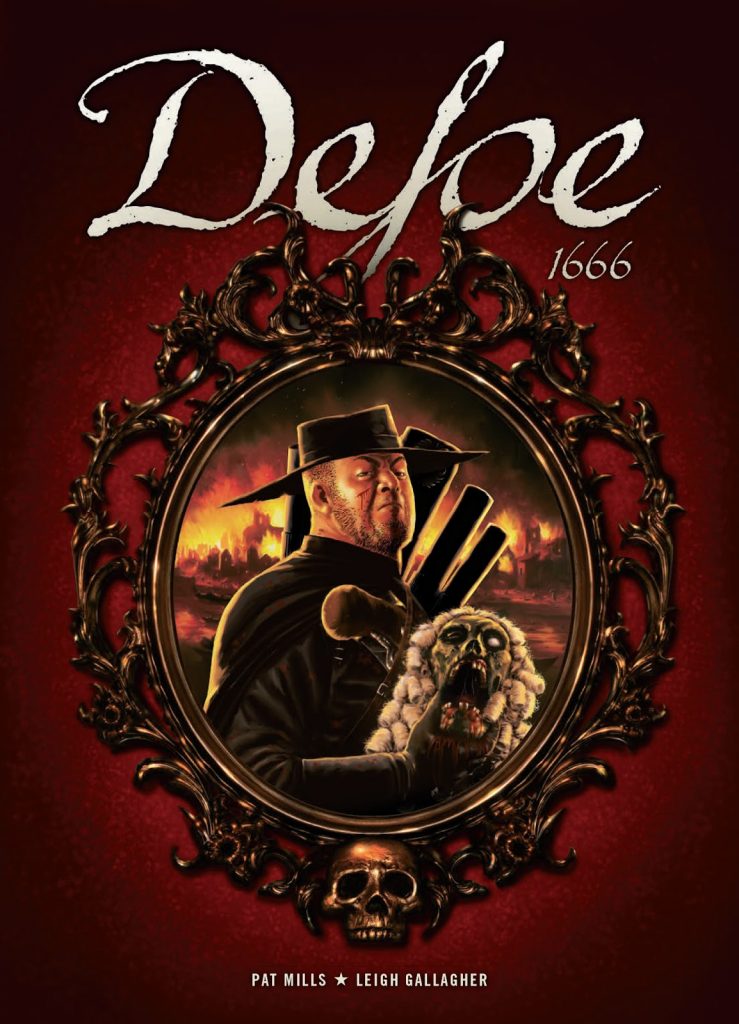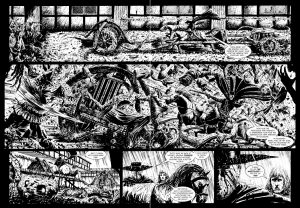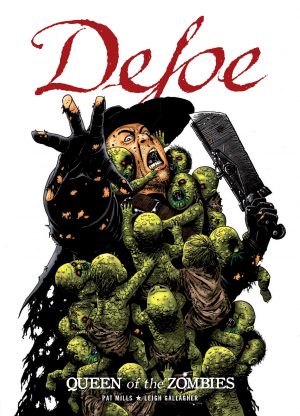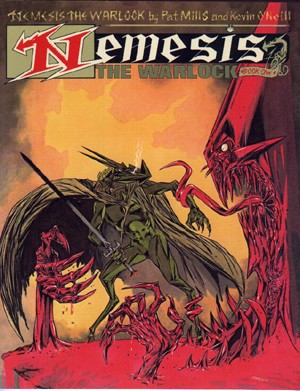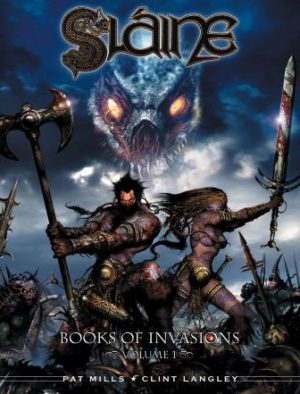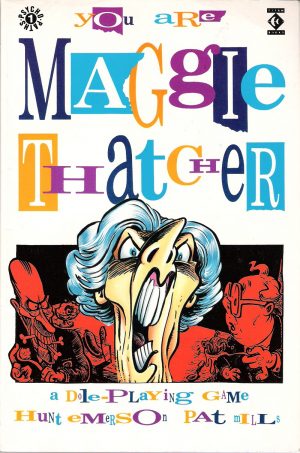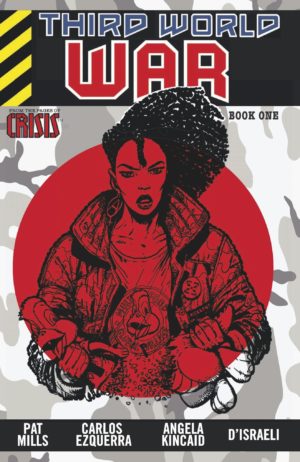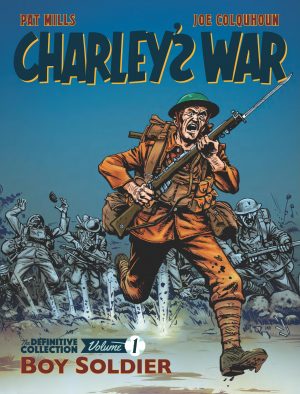Review by Frank Plowright
A zombie plague in 1668 has a regulator: Titus Defoe, a brute of a man able to do what needs to be done, armed with contraptions designed by Sir Isaac Newton, such as bellows belching fire, and a six-barrelled gun. He’s showcased over the opening chapter going about his business before Pat Mills skips back a decade to explain Defoe’s background and beliefs amid more mayhem. There are hints that Angels provided the means to fight back against zombies.
Mills is exaggerating the 17th century, but much of what he feeds into Defoe was revealed by research, and it’s fantastic stuff, unknown to most, sliding in smoothly alongside the era’s celebrities and genuine methods of employment to present a convincingly modified world. Before his zombie-slaughtering days, for instance, Defoe carried the wealthy and corpulent around in sedan chairs.
Leigh Gallagher brings the festering mayhem to stunning life, thrilling with the action, impressing with the designs, and packing the panels with detail above and beyond the call of duty. Any page shows the effort Gallagher puts into the horrors and their surroundings, and his people are personalities. Defoe himself is simply designed, almost as if a Steve Dillon character, but others are skin-crawling in their presentation, and Gallagher’s work on the technology ahead of its time is every bit as creative, with a stunning 17th century variation on the 1990s Batmobile a highlight.
Alongside the zombie-killing Mills sets up an interesting political background, with plenty feeling themselves able to speak for god, and knows well enough that the slaughter also requires some relief, so has Defoe accompanied by a reporter. At times Mills peppers the dialogue with too many period references, but importantly these may puzzle people momentarily, but don’t interrupt the action. Look some of them up for a glimpse into Britain’s appalling past. Some of it you couldn’t make up, Mills highlighting the powers accorded dung gatherers in his introduction. It’s gleefully presented, but Mills prioritises the action, never tipping over into farce.
Defoe’s introduction occupies the first third of 1666, and is a phenomenal piece of world building. For the second outing Mills and Gallagher expand the zombie-hunting world, but there’s a greater connections with Mills’ other 2000AD features. The introduction of distinctive zombie-slaughtering colleagues for Defoe, results in a sort of Restoration Meknificent Seven. Among them is Mungo Gallowgrass, diarist and a form of disgusting Ukko to Defoe’s Slaine, and it wouldn’t be Mills without exploration of the twisted priorities of the entitled classes. The second story is interesting for having the action front-ended, preceding considerable political manoeuvring, all of it interesting, and setting up Queen of the Zombies.
If you’re looking for exceptionally drawn period-based mayhem with a solid political foundation shot through with humour, Defoe is it. There’s a lot going on, and it’s puzzling that only two collections have been issued of a feature that’s been serialised well beyond them.
